When I started in FTA some years ago I had a Ku dish and motor. I learned about USALS and used it. This was very cool and then found out it was not available in C-Band equipment. Later while reading thru some German forum I ran across a picture of a modified polar mount for c-band dish that was powered by a Ku motor and used USALS. It was one poor quality photo and no explanation of its working details other than a brief description. That stuck in my mind and I thought I would like to try something like that. Then I finally took the time to understand this forum was not a mega-commercial site of little interest to me. And I joined. The world of FTA was opened to me and I saw unlimitless possibilities happening here. WSI held a special on 6' Dishes and I saw my opportunity to experiment with my USALS idea.
My idea was to modify the polar mount somehow and attach an SG2100 motor to it. I put the mount together and studied it. It was soon apparent there was no way I could make this mount work. In fact one had to take extra measures just to attach this mount to a pole. The polar mount is a simple design so I decided to build my own mount to suit me. The Ku motor is not a powerhouse so I needed to make the dish easy to move. The dish was very light made from (.02thin) gauge steel. I wanted bearings on the axis of the mount not just a long rusty bolt. This prompted me to base the mount on the headset of a bicycle. I went to a bike junkyard and was given an old frame and fork to work with. I cut out the headset and set up my mount. I went to a local metals store and bought many of the pieces I needed for scrap prices. Having a fully equipped auto shop at my disposal I had all the tools needed. I made a rolling satellite dish pole to work from. The SG2100 had been modified to use an external power source for the motor but still accepted DiSEqC commands thru the coax.
Winter weather set upon me and my satellite projects were put on hold. This gave me time to iron out a few more details on this dish. Indoor testing continued. I soon was able to make this Ku motor move this dish H-H with the help of springs. I was excited. This might work I thought. Of course I was always told it wouldn't by smarter people than me. In fact I purchased the dish mover and VBox X at the time I bought the dish. But I wanted to see for myself. I needed a location for the dish and this turned out to be on top of a new storage building. And that was not here yet. So I had to put a lot of pieces together to get this dish going. Winter was long and hard but we survived. The shed was here.
Finally! (Where have I seen that before?) The pole was up and the dish came home from the shop. With my son's help I soon had it secured to the pole. I couldn't aim it yet. Still too damn cold and I didn't really have a good way of doing that yet. But it's up and running the final test, wind loading. Spring time is a good time for wind testing. And this is where we see the total futility of this project. That motor will never be capable of handling even light winds. It wobbled so badly I thought it might actually break the case and blow its guts all over the place. After a week of observation I pulled the motor off and installed the jack. After all I still wanted the C-Band stuff. Good weather showed and I aimed the dish. The Dish works well but no USALS L
My idea was to modify the polar mount somehow and attach an SG2100 motor to it. I put the mount together and studied it. It was soon apparent there was no way I could make this mount work. In fact one had to take extra measures just to attach this mount to a pole. The polar mount is a simple design so I decided to build my own mount to suit me. The Ku motor is not a powerhouse so I needed to make the dish easy to move. The dish was very light made from (.02thin) gauge steel. I wanted bearings on the axis of the mount not just a long rusty bolt. This prompted me to base the mount on the headset of a bicycle. I went to a bike junkyard and was given an old frame and fork to work with. I cut out the headset and set up my mount. I went to a local metals store and bought many of the pieces I needed for scrap prices. Having a fully equipped auto shop at my disposal I had all the tools needed. I made a rolling satellite dish pole to work from. The SG2100 had been modified to use an external power source for the motor but still accepted DiSEqC commands thru the coax.
Winter weather set upon me and my satellite projects were put on hold. This gave me time to iron out a few more details on this dish. Indoor testing continued. I soon was able to make this Ku motor move this dish H-H with the help of springs. I was excited. This might work I thought. Of course I was always told it wouldn't by smarter people than me. In fact I purchased the dish mover and VBox X at the time I bought the dish. But I wanted to see for myself. I needed a location for the dish and this turned out to be on top of a new storage building. And that was not here yet. So I had to put a lot of pieces together to get this dish going. Winter was long and hard but we survived. The shed was here.
Finally! (Where have I seen that before?) The pole was up and the dish came home from the shop. With my son's help I soon had it secured to the pole. I couldn't aim it yet. Still too damn cold and I didn't really have a good way of doing that yet. But it's up and running the final test, wind loading. Spring time is a good time for wind testing. And this is where we see the total futility of this project. That motor will never be capable of handling even light winds. It wobbled so badly I thought it might actually break the case and blow its guts all over the place. After a week of observation I pulled the motor off and installed the jack. After all I still wanted the C-Band stuff. Good weather showed and I aimed the dish. The Dish works well but no USALS L
Attachments
-
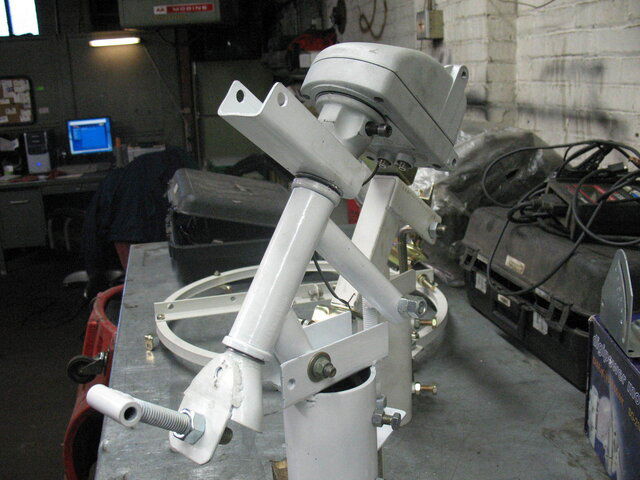 IMG_1718.JPG217.9 KB · Views: 417
IMG_1718.JPG217.9 KB · Views: 417 -
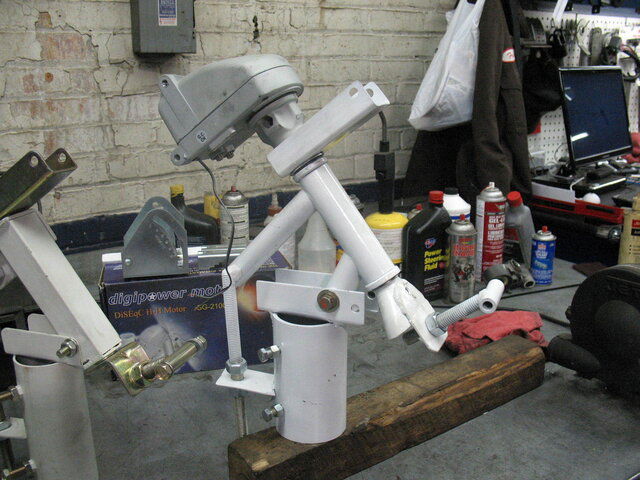 IMG_1717.JPG260.1 KB · Views: 430
IMG_1717.JPG260.1 KB · Views: 430 -
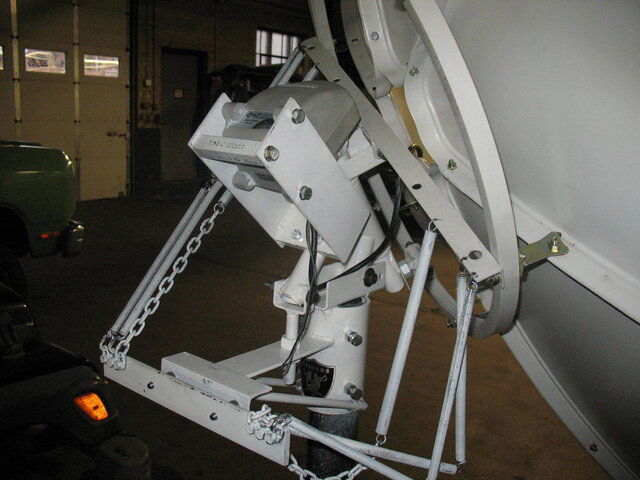 IMG_1772.JPG189.8 KB · Views: 404
IMG_1772.JPG189.8 KB · Views: 404 -
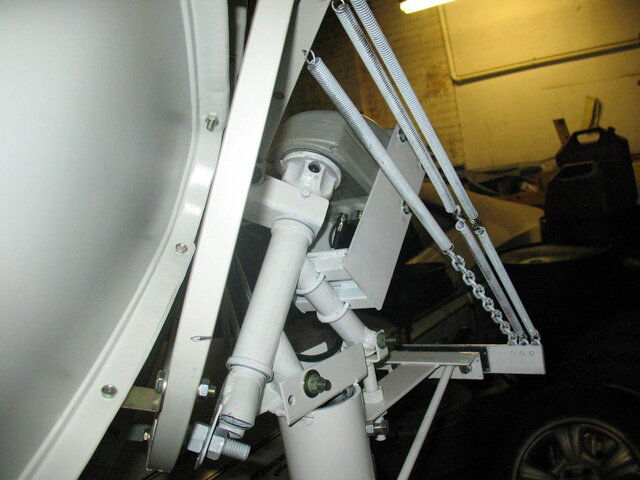 IMG_1773.JPG178.4 KB · Views: 443
IMG_1773.JPG178.4 KB · Views: 443 -
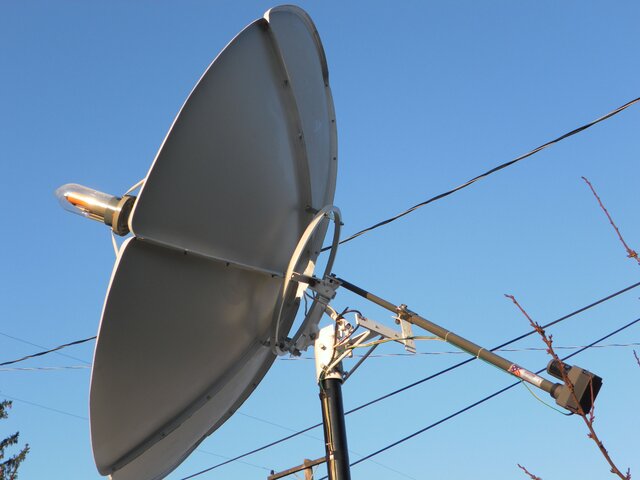 WSI6 004.JPG965.7 KB · Views: 422
WSI6 004.JPG965.7 KB · Views: 422 -
 WSI6 007.JPG1.1 MB · Views: 487
WSI6 007.JPG1.1 MB · Views: 487 -
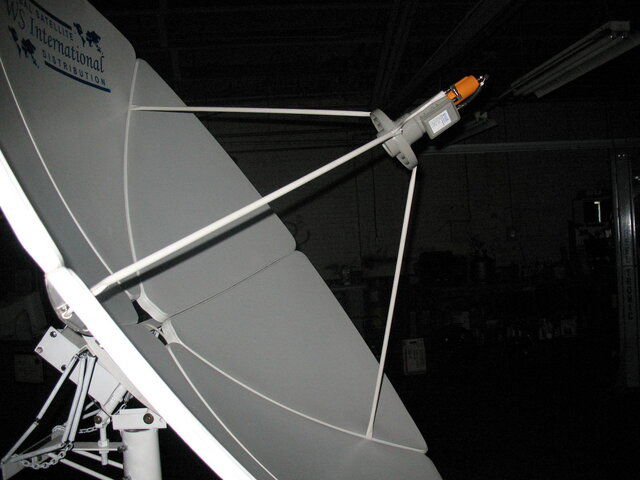 IMG_1848.JPG149.5 KB · Views: 425
IMG_1848.JPG149.5 KB · Views: 425 -
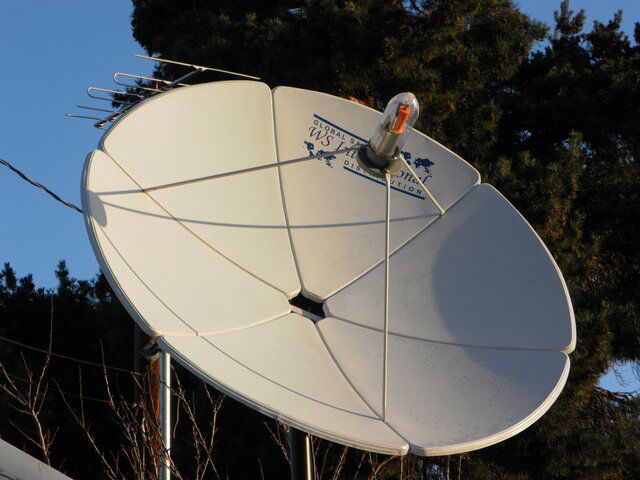 WSI6 014.JPG1.4 MB · Views: 447
WSI6 014.JPG1.4 MB · Views: 447 -
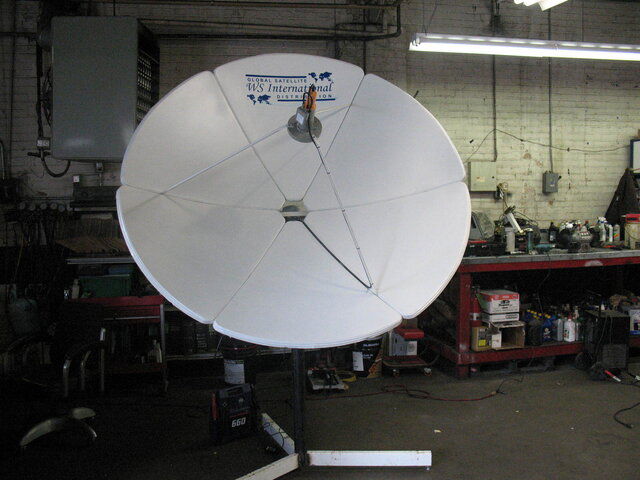 IMG_1736.JPG209.9 KB · Views: 388
IMG_1736.JPG209.9 KB · Views: 388

